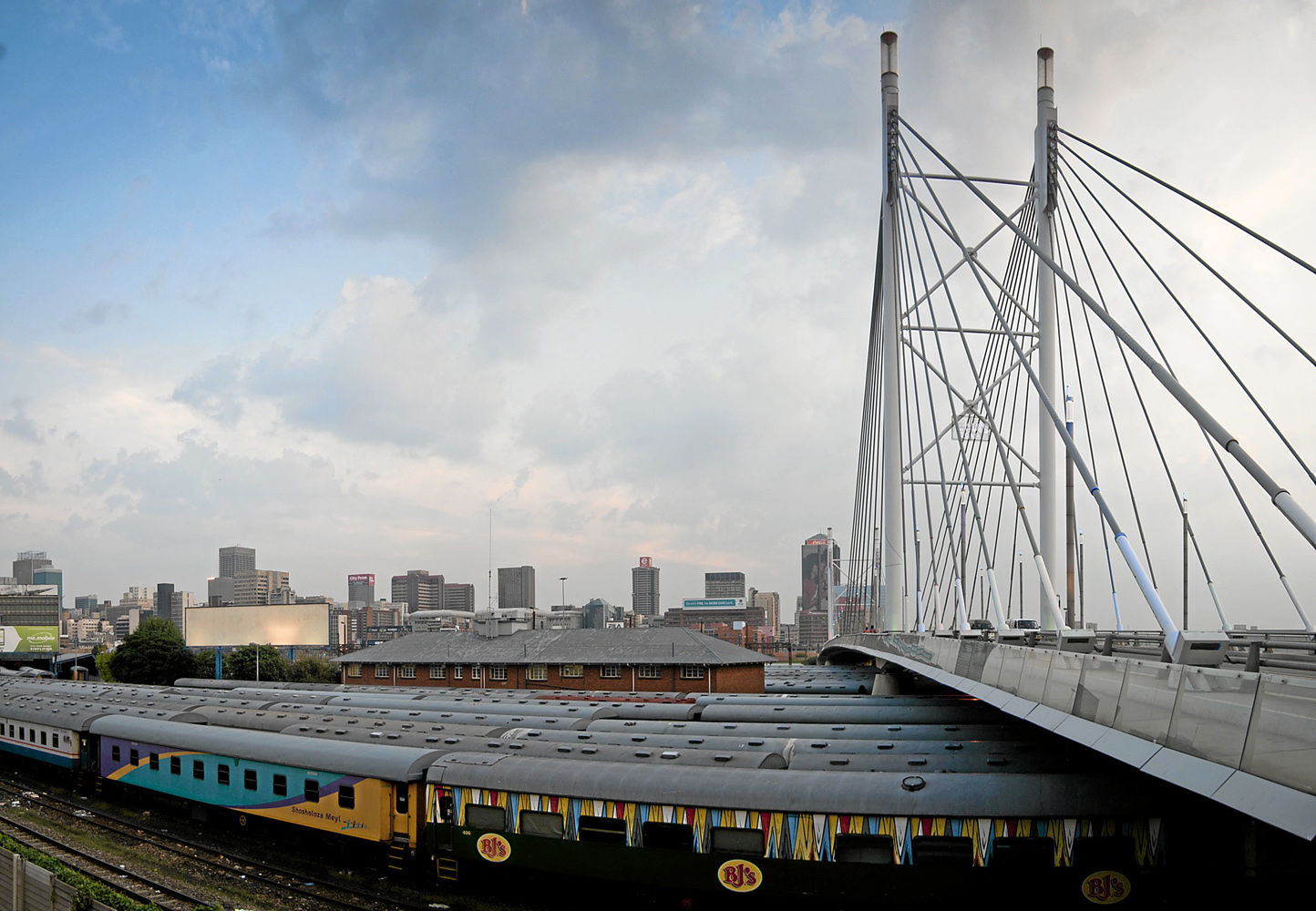There is no mountain. There is no sea. There is no beachfront. But Johannesburg has the prettiest bridge. Just ask the people who use it every day.
The pedestrians walking along the 284m construction do not only love the Nelson Mandela Bridge for its good looks, but also believe it is the best way to commemorate Madiba.
The bridge reaches across rough railway tracks, bringing together two once-divergent parts of Johannesburg. It has rejuvenated them, allowing people to move freely. The tone of people here when they talk about Mandela is soft, caring.
But when they are first prodded, most clearly have given little thought to the link the bridge has with its namesake — "It's just a name. They name things after Mandela all the time" would summarise most of these.
Some are more philosophical. Vongani Maluleke, a bit older and greyer than the average bridge crosser, scratches his beard when he looks up at the tall pylons.
"He [Mandela] is our father and supported us when our nation was born," he says. "This bridge is like that; it holds us as we cross."
Commemorate Mandela
Pressed a bit more about what it takes to commemorate Mandela, he says: "I am sure he would be proud to be commemorated like this. It has a use, not like a statue or a street name. He would want that."
James Lebepe, a lot younger and ensconced in a thick black coat, concurs.
"A bridge is right for Tata Madiba. It is not a monument that people come to look at; he wouldn't want that. It is something that works."
But even Mandela's name cannot stop theft. The bridge is an inviting target for copper thieves and people wanting a canvas for their graffiti, a security guard on the bridge says. Surveillance cameras had to be installed.
The guard, who asks not to be named, says he is proud of doing this particular job.
"It is a small thank you for what he did for us," he says.
What the three, and a few other people who wander in and out of the conversations, agree on is that statues and street names were not the kind of thing Mandela would have wanted.
"He was always humble," says one woman.

Nelson Mandela Bridge in Braamfontein. (Madelene Cronje, M&G)
The Nelson Mandela metropolis
It's not that there is a shortage of things named after the liberation hero. Just in South Africa the list goes to 85 street names, 25 education institutions and 35 other structures and schools. There is also the Nelson Mandela metropolis and 95 statues and other artworks.
The Johannesburg bridge was born at a time when the apartheid government still ruled, albeit in its final days.
When Mandela first saw the model he reportedly asked: "Whose concept was this bridge?"
Nobody could answer, and he apparently joked that mayors and premiers always take the credit for big projects.
The answer should have been urban designers Gordon Gibson and Steve Thorne. The latter says the bridge came about as part of a much larger urban renewal project he was leading in 1993.
At the time the railway tracks meant Braamfontein and the western parts of Johannesburg were poorly connected. So they planned a bridge.
From its conception it was going to be named after the recently released Mandela, says Thorne.
It was a mark of the change the country was going through that such a big construction could be named after someone whose name could previously only be whispered with the risk of getting the dreaded security police on your case.
'A private tribute to the man'
"It was a private tribute to the man who brought us out of darkness and into the light," Thorne says.
The bridge was also a chance to skip past colonial legacies. Previously the route from Cape Town to Cairo went across the nearby Queen Elizabeth Bridge.
"We thought it was politically out of step to have to cross a bridge with a colonial name," Thorne says.
Nazir Alli, head of the South African National Roads Agency, was heavily involved in the project.
"We went to Madiba throughout the project when we were choosing designs and we really enjoyed working together," he says.
He says it was a project Mandela was really attached to.
"And you look now. We have people who include a trip over the bridge in their travels to South Africa, so they can say they drove over the Nelson Mandela Bridge," he says.
Ketso Gordhan, city manager of Johannesburg at the time the bridge went on tender, says: "The idea was to always name the bridge after the old man. It was his city. He lived here."
Dilapidated parts of the city
The city was broke, so Gordhan worked on creating bringing together public and private groups to find the R120-million it cost.
The bridge is now doing its job of rejuvenating and linking these – previously dilapidated parts of the city.
"It is a real source of pride for us that the bridge hosts so many events and has changed that part of town while carrying his name," Gordhan says.
These events range from marathons, which now go into the city, to fashion parades and photo shoots. The bridge is a living statue.
Back on the bridge, as he walks away, the greying Maluleke looks back and up at the bridge's tall pylons.
He smiles, and is on his way.